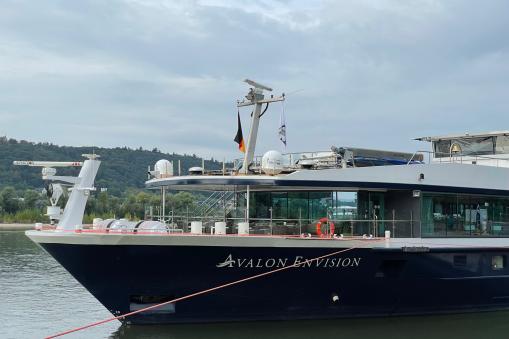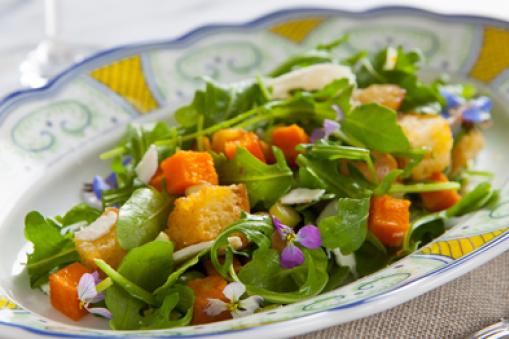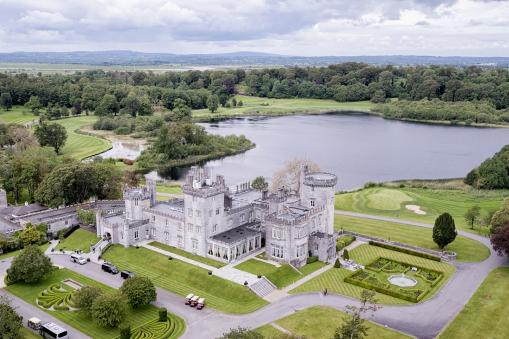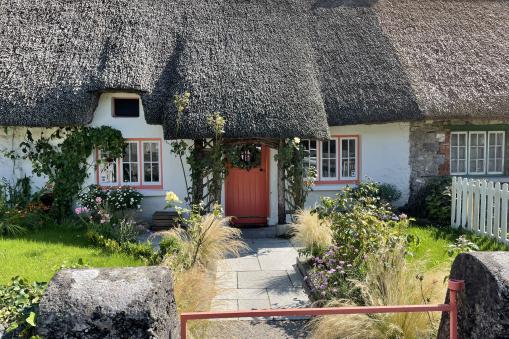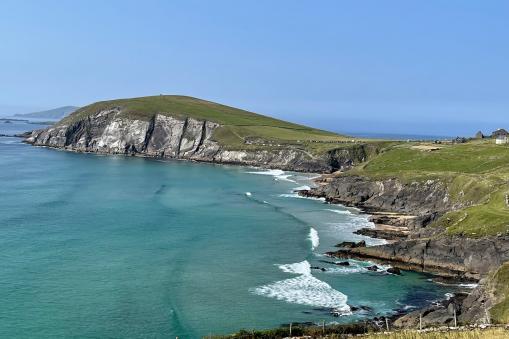Become a part of your journey
You are here
Further Afield's Journal
The Travel Nook
River Cruising Through Germany
What a beautiful way to see the villages, towns and countryside of Europe. One’s mind and eyes are opened by travel. Variety is the spice of life and the different ways to visit countries are numerous.
Day 1. This cruise begins in Basel, Switzerland. Boarding is at 3pm, all guests must be on board by 5pm. After our introduction and familiarization we enjoy an exceptional dinner with evening entertainment.
Recipes From Around the World
Autumn Panzanella
The first panzanella salad was an invention of necessity in the 16th century, enabling Italian cooks to make use of stale bread as well as garden vegetables. Our unusual autumn variation brings together the vibrant colours and flavours of a fall garden, and can even serve as a hearty vegetarian lunch.
Recipe has been provided by Viking Cruise Line.
www.vikingcruisescanada.com/oceans?agenturlid=furtherafieldtravel
Ingredients
CROUTONS:
- 2 T (30 ml) extra virgin olive oil
- 5 roasted garlic cloves, mashed
- 3 C (216 g) ciabatta bread, cut into 1-in (2-mm) cubes
- Kosher salt to taste
VINAIGRETTE:
- 2 T (31 g) Dijon mustard
- ¼ C (59 ml) white balsamic vinegar
- Kosher salt to taste
- ¾ C (177 ml) canola oil
- 10 sage leaves
- Freshly ground pepper to taste
SALAD:
- Extra virgin olive oil, as needed
- 1 C (140 g) butternut squash, peeled and finely diced
- Kosher salt to taste
- ½ C (70 g) parsnip, peeled and finely diced
- 1 15-oz (425-g) can gigante or other large white beans, rinsed and drained
- ¼ C (18 g) green onions, thinly sliced
- 4 C (80 g) loosely packed mesclun mix or arugula
- Freshly ground pepper to taste
GARNISH:
- 2 oz (57 g) ricotta salata, shaved
Directions
Croutons: Preheat oven to 350°F (176°C). Place a large oven-safe skillet over medium heat, add olive oil and mashed garlic, stirring to combine. Add bread; season with salt. Stir occasionally until bread is golden on several sides, about 3 minutes. Place skillet in oven and bake, stirring once or twice, until bread is golden brown, about 7 minutes. Remove from oven; transfer to paper towels to cool.
Vinaigrette: Place mustard, vinegar and a few pinches of kosher salt into the work bowl of a blender. With motor running on medium, slowly drizzle in half the canola oil. Add sage leaves, turn up speed to high and drizzle in remainder of oil. When all oil has been incorporated, vinaigrette should be pale yellow-green and thick enough to coat a spoon. Adjust seasoning with salt and pepper.
Salad: Place a large frying pan over medium heat and add a thin film of olive oil. When hot, toss in butternut squash and a few pinches of kosher salt. Cook until golden brown along edges, stirring frequently, about 7 minutes. When squash is tender, transfer to paper towels; cool to room temperature. Repeat process with parsnips. When ready to serve, place croutons, squash, parsnips, beans, green onions and greens in a large bowl. Add vinaigrette to taste; toss; season with salt and pepper. Divide among plates and garnish with ricotta salata before serving.
Serving Suggestion
This salad makes a superb starter for any meal, or add grilled chicken to make the dish a meal in itself.
- Prep time: 22 minutes.
- Cook time: 25 minutes.
- Makes 6 servings.
Dromoland Castle Interview
Join Further Afield Travel and Tours as we speak with Mark Nolan, Managing Director of Dromoland Castle. Learn how the castle has managed through covid times and what the castle staff had been up to during the lockdown. The doors are open and once more more people are travelling.
Link to Video:
Tourism in Ireland and the Tidy Towns
Today, taking a holiday is a central characteristic of modern societies. Every year millions of people travel away from home and the workplace for the purpose of pleasure and recreation. Underlying the modern mass tourism phenomenon is the widespread assumption that people need to ‘get away from it all’ for the sake of physical and mental health and the pressures of everyday life.
Going back in the 18th century a tiny minority of the population could enjoy a period of time away from home. The Grand tour embarked upon by the sons and daughters of the aristocratic families of society might have lasted a year or more, enjoying spas and the wonders of nature worldwide. Spas in Ireland at this time were in Lucan, Co. Dublin. Mallow, Co. Cork and Castleconnell, Co. Limerick. Insignificant in comparison to the UK or elsewhere.
Medical recommendations, if a diagnosis couldn’t be found were sometimes suggested ‘Take to the waters’ (go for a swim). This at least was better than bleeding which some doctors practiced at the time, painful.
Visitors rather than tourists to Ireland in the 1950s early 1960s would be mainly emigrants coming back to visit and stay with family or friends. Bord Failte a semi-state Irish Government department had been set up for the promotion of tourism. 88% of visitors were from the UK. By the 1970s this number had changed however to 15% coming from North America and Canada, with a smaller 7% coming from Europe. Bord Failte became involved in the development, regulations, promotion and marketing of the industry.
Coming up to the 1980s tourism was been taken more seriously by the Government. The Troubles in Northern Ireland had put a damper on tourism during the 1970s. Ireland had the lowest number of tourists in Europe. Then travel became more affordable, Ryanair airlines was set up in 1986 in competition to Aer Lingus the National airline.
Worldwide, with Oil crisis and other factors, economies were struggling. Unemployment numbers and immigration figures rocketed in Ireland. For the tourism business in Ireland the European Union funded this sector to the tune of 300 million pounds Sterling (the Euro not having yet been introduced). The targets for this investment were that overseas tourism numbers would reach 4.2 million and creating 25,000 jobs over a four-year period.
The 1990s saw another branch of tour operator on the scene. DMC, Destination Management Companies, these were hugely successful in arranging for companies from abroad to visit Ireland as a promotion or reward for their staff. Accompanied by family, friends or others who could avail of free time to explore whatever destination they were in.
Another was the Universities and Colleges that attracted European students to come to Ireland to further their English language speaking skills.
Cruise ships coming into numerous ports around the island has brought both footfall and employment to otherwise quiet regions. Coach companies, tour guides, stores, golf courses, visitors’ centres, Agri-tourism, parks and mountains, all have benefited from the expansion in tourism.
With the Good Friday agreement of 1998 marking the end of the Troubles in Northern Ireland, the island of Ireland was brought under the one umbrella of Tourism Ireland, founded in 2000 for the promotion of tourism.
Figures for 2019 showed that the number of tourists was at an all-time high of 11.2 million people. When one considers that a spend of 5.5 billion euro was created, it’s an industry that’s among the top 7 in the country. The employment figure for this sector is about 180,000. This figure can be very misleading as the business is seasonal. Some parts of the country may see very little visitors for the winter months.
Ireland’s Tidy Towns.
In 1958 a competition was set up in Ireland to find what was the prettiest or tidiest town in the country. Only about 60 towns entered. Some boys, with the old flat caps declared ‘that some politicians have too much time on their hands and that this gimmick won’t certainly last too long’. The Glenties in Co. Donegal won the first one and followed up with retaining the title for two more years. When television started to broadcast in 1961 more and more towns entered.
A voluntary organization, with the main sponsors being the SuperValu grocery stores, with many other organizations also involved. Starting in March of each year, flowers are planted, trees are pruned, shop fronts and houses are given a rebirth. Going through towns and villages in the early mornings, it’s an awakening and heart lifting experience to see the dedication and the pride that people have to their locality. People from eight to eighty are involved. The organization is well established. A chairperson, secretary, treasurer and the other members of the committee with the skills and know how that are needed to deliver the support needed.
The idea of the competition is not just the aforementioned effort but also to bring attention to these areas. Investment from overseas is a must for all of Ireland and the IDA (Irish Development Authority) has attracted many companies under the FDI (Foreign Direct Investment) to set up here. Small and large multinational companies are government funded and grant aided when agreeing to locate. First impressions are everything and the tidy towns are the injection that impresses a company that “what a lovely place to offer to employees. Schools, churches, community facilities, and much more. It’s so important for an area to have this investment, statistics show that for every 10 employees in a work place they are supporting 6 others in that area. With money being spent through housing or stores. Another point to remember is, that Ireland is now the largest English-speaking country in the EU, with a highly well-educated workforce.
With the environment having a ‘Greener’ belief now, hopefully it may be easier to keep buildings cleaner.
Adjudication for the competition takes place in June with results coming out in September or October. No monetary value for the winner. A gold medal for the winning town, silver and bronze for the runners up. Over 700 towns take part now after 70 years. Outliving the boys with the flat caps, even the caps have disappeared. For the towns that win or those that are close to winning the bar has now been raised. The top towns have to try and stay at the top and the runners up have to do better.
Best wishes and thanks to all that take part. No other country in Europe has this competitive approach to a tidy town. That having been said driving throughout Europe one has to appreciate the beauty and cleanliness of places.
Dingle Peninsula
North of the Iveragh Peninsula lays the Dingle Peninsula on Ireland's southwest Atlantic coast. Rugged cliffs and sandy beaches. One of our favourite drives!
Dingle Peninsula
